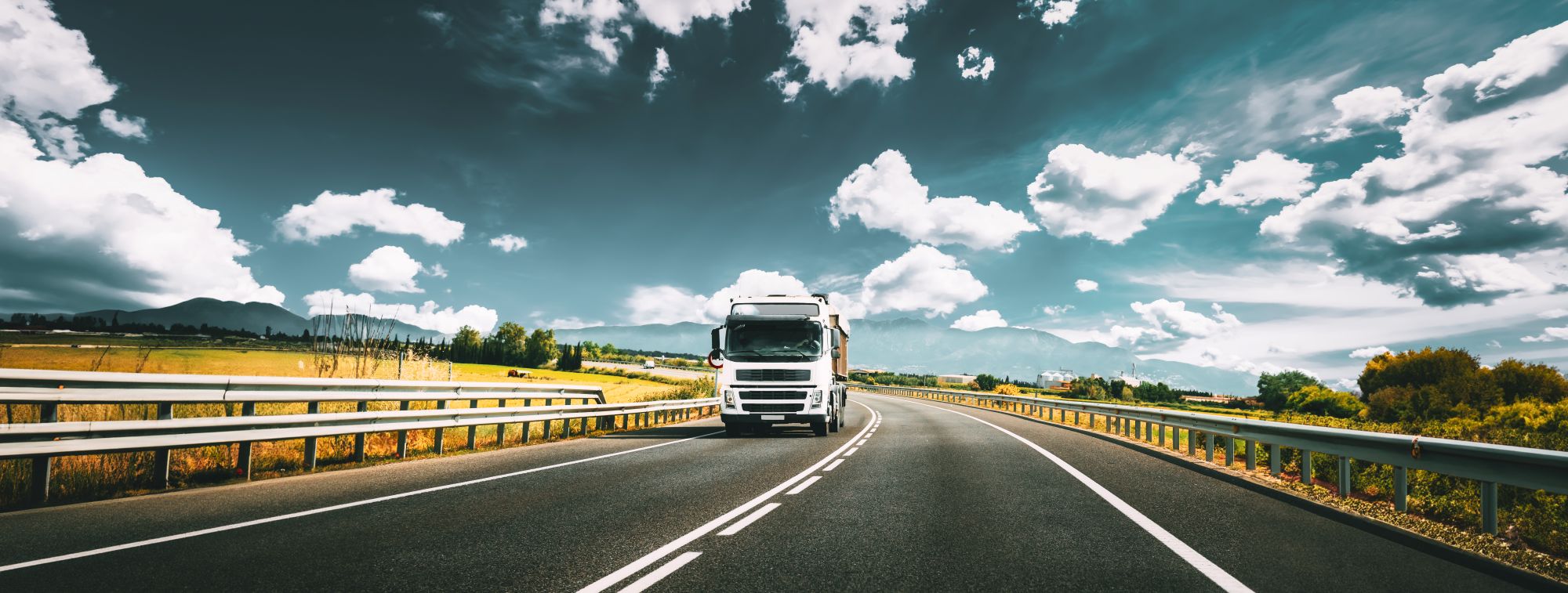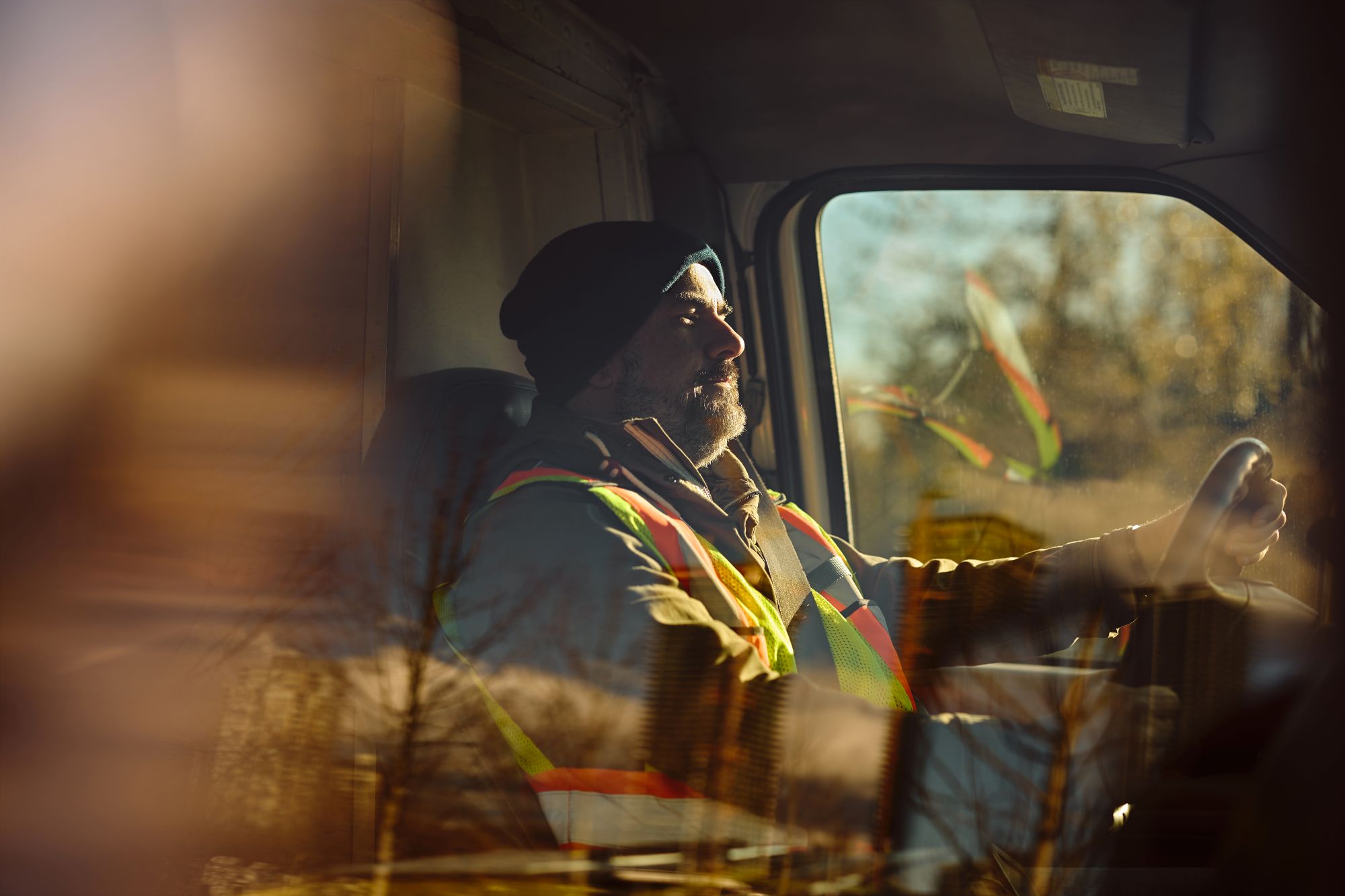
Guest
Rumäniens Infrastrukturboom - Was er für den Mobilitätssektor bedeutet
Erstellt: 22.09.2025
•
Aktualisiert: 22.09.2025
Rumänien entwickelt sich rasch zu einem strategischen Logistik- und Frachtdrehkreuz in Südosteuropa. Unterstützt durch EU- und nationale Fördermittel in Milliardenhöhe, zieht die infrastrukturelle Renaissance des Landes Flottenbetreiber, Logistikinvestoren und Hersteller an. In diesem Artikel gehen wir der Frage nach, was diese Entwicklungen für Fuhrparks, Fahrer und den Transportsektor insgesamt bedeuten.
Die rumänische Verkehrsinfrastruktur hat sich in Tempo und Umfang dramatisch verändert. Die Regierung hat für 2026 rund 25 Milliarden Lei (4,27 Milliarden Pfund) für Straßenbauprojekte vorgesehen, was eine noch nie dagewesene Konzentration auf Autobahnen und Frachtkorridore widerspiegelt.
Mitte 2025 waren in Rumänien rund 1.325 km Autobahnen in Betrieb (1.188 km Autobahnen und 138 km Schnellstraßen), weitere 741 km befanden sich im Bau und 669 km in der Ausschreibungsphase.
Bis 2030 will Rumänien sein Autobahnnetz verdoppeln, strategische Eisenbahnstrecken modernisieren, den städtischen Verkehr ausbauen und lange Zeit isolierte Regionen miteinander verbinden. Die Herausforderung ist immens, aber das Ergebnis könnte die Position des Landes auf der europäischen Verkehrslandkarte verändern.
Zu den wichtigsten Projekten gehört die Nord-Süd-Achse A7 von Ploiești nach Siret, die den Verkehr zur ukrainischen Grenze erleichtern wird und bis 2026 fertiggestellt werden soll. Ein weiteres Projekt ist eine 11 km lange Schnellstraße, die Satu Mare mit der rumänischen Grenze zu Ungarn verbindet. Die Ringautobahn A0 um Bukarest wird den Güter- und Personenverkehr rund um die Hauptstadt erleichtern, wobei die südliche Hälfte bereits in Betrieb ist. Weitere wichtige Bauvorhaben sind die Korridore Suceava-Oar und Timișoara-Moravița sowie der 2,9 km lange Meseș-Tunnel, der der längste Straßentunnel Rumäniens werden soll.
"Diese Korridore werden nicht nur die Ost-West- und Nord-Süd-Verbindungen verbessern, sondern auch bisher isolierte Regionen wie Moldawien und den Nordosten mit dem Rest des Landes und der EU verbinden", erklärt Eduard Ularu, Business Development Manager bei SNAP.
Aber Infrastruktur besteht nicht nur aus Straßen. [Die Brăila-Brücke (https://ec.europa.eu/regionalpolicy/whats-new/panorama/2023/07/19-07-2023-braila-bridge-a-great-leap-for-romania-and-the-euen) über die Donau, die im Juli 2023 für 500 Mio. EUR (363 Mio. EUR kofinanziert von der EU) eröffnet wird, ist die erste Querung der maritimen Donau und verbessert die Anbindung von Constanța und Dobrudscha erheblich.
Weitere wichtige Entwicklungen sind der geplante Ausbau des Schienenverkehrs im Hafen von Constanța und die 130 Millionen Euro teure Erweiterung der Container- und RoRo-Kapazitäten durch DP World Romania, die eine Verdoppelung des Durchsatzes und zusätzliche Logistikverbindungen über Straße und Schiene vorsieht.
Warum das wichtig ist
Rumäniens Fracht- und Logistikmarkt ist beträchtlich. [Mit einem Wert von ca. (https://www.mordorintelligence.com/industry-reports/romania-freight-and-logistics-market) 21,11 Mrd. USD im Jahr 2025 wird er bis 2030 voraussichtlich auf 24,27 Mrd. USD ansteigen. Allein für das Straßengüterverkehrssegment wird für 2025 ein Wert von 9,07 Mrd. USD prognostiziert, der bis 2030 auf 10,37 Mrd. USD ansteigt.
Diese Zahlen spiegeln die wachsende Rolle Rumäniens als transeuropäischer Korridor wider, der Routen aus Ungarn, Bulgarien, der Ukraine, Moldawien und den Schwarzmeerhäfen bedient. Die Ukraine leitet nun einen Großteil ihrer [Getreideexporte über Constanța] (https://breakbulk.news/romanias-government-approves-railroad-upgrades-for-constanta-port/) an der Schwarzmeerküste und strebt eine Verdoppelung von 2 auf 4 Millionen Tonnen pro Monat über die rumänische Infrastruktur an.
"Diese Investitionen werden Rumänien helfen, stärker mit großen Logistikzentren wie denen in Polen und Griechenland zu konkurrieren", kommentiert Eduard Ularu. "Constanța hat ein riesiges Potenzial, und mit der richtigen Infrastruktur kann es endlich das Tor für den europäischen Handel werden, das es sein sollte.
Verbesserte Lagerhaltung, niedrigere Arbeitskosten und Friendshoring-Trends ermutigen Hersteller und Einzelhändler, Logistikzentren in Rumänien anzusiedeln, was die Nachfrage auf den Straßen erhöht und das Wachstum des gesamten Netzes vorantreibt.

Digitale Entwicklungen
Der Ausbau der Infrastruktur erfolgt nicht nur physisch, sondern auch digital. Das Land baut seine Autobahnen und Güterverkehrskorridore aus und integriert intelligente Systeme, die für schnellere, sicherere und effizientere Fahrten sorgen sollen.
Im gesamten Netz werden [intelligente Verkehrsüberwachungssysteme] (https://www.itf-oecd.org/sites/default/files/docs/smart-use-roads_1.pdf) installiert, darunter Sensoren zur Bewegungsmessung, induktive Verkehrsschleifen und Kameras am Straßenrand. Diese Systeme werden in Echtzeit in die Verkehrsleitzentralen von Städten wie Bukarest, Brașov und Timișoara eingespeist und helfen den Behörden - und den Flottenbetreibern -, schneller auf Zwischenfälle und Staus zu reagieren.
Auch Bukarest [modernisiert seine Ampelinfrastruktur] (https://urban-mobility-observatory.transport.ec.europa.eu/news-events/news/bucharest-continues-make-its-traffic-light-system-smarter-2023-02-27_en) und setzt dabei KI und intelligente Detektoren ein, um den Fahrzeugfluss zu optimieren und Engpässe zu verringern. Dies hat erhebliche Auswirkungen für Frachtunternehmen, die sich in dichten städtischen Gebieten bewegen, die Zuverlässigkeit der Fahrzeiten verbessern und Leerlaufzeiten reduzieren.
Auf nationaler Ebene stellt Rumänien auf [digitale Straßenbenutzungsgebühren] um (hhttps://business-review.eu/business/transport-and-logistics/eltra-logis-the-new-tollro-road-charging-system-can-be-a-catalyst-for-fleet-renewal-285636). Das neue TollRO-System, dessen Einführung für 2026 geplant ist, wird die derzeitige E-Vignette durch ein entfernungsabhängiges, emissionsabhängiges Mautmodell ersetzen, das den EU-Richtlinien entspricht. Diese Änderung könnte Anreize für umweltfreundlichere Flotten bieten und Logistikunternehmen, die in emissionsarme Fahrzeuge investieren, eine gerechtere Preisgestaltung ermöglichen.
Für die Fahrer bedeutet dies weniger Verspätungen, klarere Echtzeitinformationen und eine bessere Reaktion auf die Straßenverhältnisse. Für die Betreiber ist es eine Chance, Flottenplanung, Routenmanagement und Nachhaltigkeitsstrategien zukunftssicher zu machen.
Auswirkungen für Fuhrparks und Fahrer
Für Fuhrparks und Fahrer bringt die Modernisierung Rumäniens sowohl Vorteile als auch Nachteile mit sich. Am wichtigsten ist vielleicht, dass sie zu einer verbesserten Netzeffizienz führen wird. Mit reibungsloseren Strecken und schnelleren Korridoren werden die Investitionen wahrscheinlich zu einer Verringerung der Fahrzeiten und des Leerlaufs führen. Gefährliche einspurige Nationalstraßen werden nach und nach durch sicherere und schnellere Autobahnen ersetzt. Dies wird die Produktivität erhöhen und auch die Zeit, die die Fahrer hinter dem Steuer verbringen, verringern.
Es ist jedoch nicht alles positiv. Laufende Arbeiten auf Autobahnen wie der A7 und der A8 können zu Verspätungen und Routenänderungen führen, während die Arbeiten durchgeführt werden. Es könnte auch ein höheres Frachtaufkommen bedeuten (insbesondere in Constanța und an den Grenzübergängen), was die bestehende Infrastruktur belasten könnte.
"Im Moment verursachen Baustellen wie die DN2 und Teile der A0 Bukarester Ringstraße Umleitungen und Engpässe", erklärt Ularu. "Lkw verlieren Stunden auf Strecken, die eigentlich nur Minuten dauern sollten - und das wirkt sich auf alles aus, vom Kraftstoffbudget bis zur Lieferzuverlässigkeit.
Darüber hinaus erfordern neue Korridore, strengere Sicherheitsvorschriften und die Verlagerung von Straßennutzungsgebühren eine stärkere Beachtung der Vorschriften.
Unterstützung des Wohlbefindens der Fahrer während der Umstellung
Trotz des Ausbaus der Infrastruktur gibt es in einigen Güterverkehrskorridoren, vor allem in der Nähe von Grenzgebieten und wichtigen Knotenpunkten, nach wie vor nur wenige sichere Rastplätze und Sozialeinrichtungen. In Baustellenbereichen gibt es oft keine offiziellen Rastplätze, so dass die Fahrer ungeschützt sind und nirgendwo rasten können.
"Wir sehen immer noch gefährliche Zwischenstopps und überfüllte Rastplätze auf wichtigen Güterverkehrsstrecken", sagt Eduard. "Moderne Autobahnen werden alle 30 bis 50 Kilometer spezielle Raststätten mit Tankstellen, Geschäften und Gastronomiebetrieben bieten. Für die Fahrer bedeutet dies sicherere Parkplätze mit angemessener Beleuchtung, CCTV-Überwachung und sicheren Rastplätzen, die das Diebstahlrisiko verringern. Sanitäre Einrichtungen wie Duschen und saubere Toiletten - eine Rarität auf nationalen Straßen - werden endlich zur Norm.
SNAP schließt diese Lücke mit seiner interaktiven Parkplatzkarte für ganz Rumänien. Fahrer können über die SNAP-Karte leicht vertrauenswürdige, sichere Lkw-Parkplätze finden, Plätze im Voraus buchen, sofern verfügbar, und sicherere Routen planen.
Planen Sie eine Reise durch Rumänien? Nutzen Sie die SNAP-Karte, um sichere, fahrerfreundliche Parkplätze entlang wichtiger Frachtrouten zu finden.
Der Aspekt der Nachhaltigkeit
Dieser Modernisierungsprozess der Infrastruktur spielt auch eine wichtige Rolle für eine umweltfreundlichere Logistik. Durch einen besseren Verkehrsfluss werden die durch Leerlauf und Stop-and-Go-Fahrten verursachten Emissionen gesenkt.
Außerdem werden die Verkehrskorridore ausgebaut, um die entstehende Infrastruktur für Elektrofahrzeuge und Wasserstofftankstellen zu unterstützen und die Abhängigkeit von fossilen Brennstoffen zu verringern.
Eine Region in Bewegung
Rumäniens Infrastrukturinvestitionen markieren einen entscheidenden Wandel für den Güterverkehr und die Mobilität in Südosteuropa. Für die Flotten bedeutet dies schnellere Korridore, größere Logistikkapazitäten und ein höheres Handelsvolumen, aber auch eine genauere Prüfung von Tierschutz, Compliance und Widerstandsfähigkeit.
Als zukunftsorientierter Branchenführer setzt sich SNAP für einen gut informierten Betrieb, eine flexible Routenplanung und fahrerorientierte Tools ein, die sowohl die Sicherheit als auch die Effizienz fördern. Rumänien modernisiert nicht nur, sondern gestaltet auch den Güterverkehr in der Region neu.
"Dabei geht es nicht nur um Straßen, sondern auch um Widerstandsfähigkeit, Nachhaltigkeit und den Aufbau einer intelligenteren Zukunft des Güterverkehrs in ganz Europa. Rumänien steht im Zentrum dieses Wandels", so Eduard.



